Varicose is a scourge of our time.According to clinical studies on the planet, about half of the entire population suffers from one form or another of pathological disorders of the circulatory system.Women, in their physiological characteristics, are more proposed to disease.The number is up to 40% of the total number of patients.While men are only 20% of cases subject to this pathology of blood vessels.
Most often, people in the middle age group (30-40 years) and the elderly suffer from a disorder of venous blood circulation.The first disease affects the lower limbs.
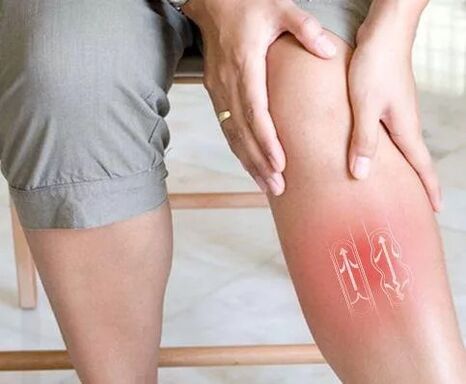
The symptoms and treatment of varicose veins of the legs are closely related to the interconnectedness and provide preventive examination of blood vessels for selection of proper therapy.
Clinical picture
Dysfunction of venous blood flow develops due to damage to the valves of perforation (binding) veins, their overload and deformation.When the work of deep (internal) arteries is impaired, the bloodstream becomes chaotic, leading to its absorption and formation of characteristic nodes.They are not intended to transport such a powerful blood flow, thin veins are stretched, forming vascular balls and the notorious blue "snakes" (winding veins that appear on the surface of the skin).Such defects are clearly visible to the naked eye or on palpation at the destruction site.
Different veins belong to progressive pathologies, which without timely treatment are filled with health complications and damage.Improper blood reflux has different manifestations, depending on the severity of the patients with blood vessels and is expressed by increasing the intellectual pressure and the appearance of excessive fatigue of the legs, swelling, weight in the legs and ankles, regular convulsions.In advanced cases of varicose veins, wounds, ulcers and blood clots are possible.
Varicose is primary and secondary.In addition to the lower limbs, the site of dislocation of the disease is the stomach, esophagus, pelvic organs, testes, seminal cables, penis, colon.In the event of a disturbance of the blood flow of deep veins, the pathology is quite difficult, leading to the weakening of the walls of the blood vessels, the expansion of the internal cavity of the arteries and the transition of the disease to chronic form (venous insufficiency).Therefore, the earlier the varicose veins are diagnosed, the greater the chances of recovery and the less risk of pathological complications.
Because of what is formed
The causes of venous expansion are different factors.Conventionally, they can be divided into basic and secondary.The main sources of varicose veins are:
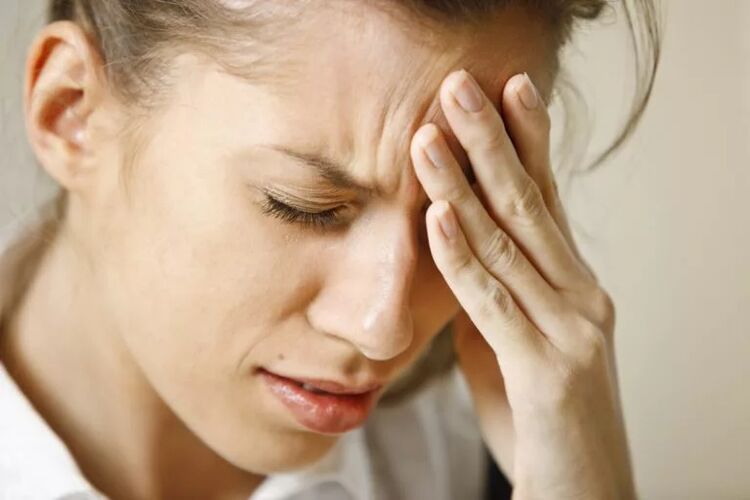
- Constant heavy exercise;
- Long stay with static position - sitting or standing;
- Adverse environmental conditions - for example, constantly high air temperature;
- Fluctuations in body weight or chronic obesity;
- Hormonal imbalance - a period of pregnancy or menopause;
- Diseases of the endocrine system;
- Hereditary predisposition, manifested in the characteristics of the structure of the blood vessels, namely the congenital anatomical inferiority of the venous valves and the weakness of the connective tissue of the arterial walls;
- Neuroses.
In addition, indirectly causing dysfunction of the venous-vascular system can:
- Systematically recurring stresses affecting the condition of the arteries and nerve endings, which leads to an increase in pressure and elasticity;
- Classes of professional sports with the main focus on the lower limbs - lifting the bar, long distances, etc.;
- Wearing uncomfortable clothes and shoes - something that is tight in the pelvis and legs, tight and high quality shoes in the area;
- Previously transferred injuries to the lower limbs (fractures);
- The adult era, as a result of which the functionality of epithelial cells is formed, contributing to the weakening of the walls of the veins, the disturbed valves and the increase in the internal volume of the arteries.
In history, the development of varicose veins is generally stimulated not by one but by a complex of factors.
Symptoms of the disease
Different veins can have different manifestations that depend on the degree of complexity of the pathology and the physiological characteristics of the patient's body.In accordance with the stages of varicose veins, the following symptoms of blood vessels are observed:
- Venous patterns or "stars" (telagioectasis) on the skin;
- Swelling of the limbs, especially at the end of the day;
- Leg pain or veins when felt;
- Periodically repeated convulsions;
- Fatigue, especially in tourism;
- Visual manifestation of veins on the surface of the skin;
- Feeling of weight in the legs;
- Burning of vein lesion;
- Muscle itching;
- Pain of different nature and pain;
- The formation of curving veins in the area of the legs and legs;
- Dermatological changes in the skin - the appearance of dryness, pigmentation, darkening;
- Development of dermatitis, eczema and trophic disorders in the form of unbelievable wounds and ulcer;
- Skin compaction in places for the progression of varicose veins;
- The formation of hematomas.
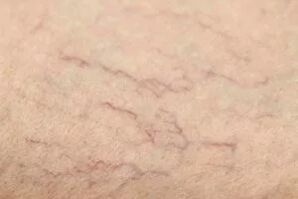
Rarely, but sometimes this happens, rupture of venous nodes and the appearance of subcutaneous bleeding.In this case, the situation requires emergency medical attention and surgery.
Symptoms can be manifested by adolescence.Developing imperceptibly, after a while the disease is felt by a mass of unpleasant health effects.If at least one is present from the above characters, an exam must be submitted immediately.Heals patients with a phlebologist or surgeon.
Classification
Based on the decision of the International Scientists Community, the pathological enlargement of the lower limbs veins is customary for systematization according to the special classifier of CEAP or clinical etiology anatomical pathology.Based on this typology, varicose veins have 6 clinical stages:
- Zero.There are significant subjective complaints of the patient about some of the symptoms of varicose veins, but with a visual examination and medical examination, the obvious signs of the disease are still absent.
- Grade I.Small vascular networks, rare edema, weight, burning, and a sense of "buzzing" in the legs appear on the surface of the skin.
- II degree.It is considered the starting point of true varicose veins.It is characterized by an external distinctive manifestation of enlarged vessels, the formation of venous nodes that exacerbate after a long stay in static state or high walks.Starting from this stage, thrombosis is observed.
- III degree.The symptoms of the second group are joined by regular swelling, most noticeable by the end of the day and pulling, sick calf pain.
- Grade IV.Throfic changes in the skin are observed.Due to the excessive accumulation in the epidermis of the pigment, the skin begins to change its color from dark brown to black.It is also possible to develop small local inflammation in the form of erythema or wet wounds, leading to dermis and ulcers over time.
- V grade.He has the same course as the fifth stage, but with the acquired trophic ulcer.
- VI degree.It is characterized by severe progression by the formation of unsurpassed wounds and ulcers.
Varicose veins are serious.Without timely treatment and constant prevention, it quickly progresses and has irreversible consequences and serious consequences, to death.Only 10 years are sufficient from diagnosed with varicose veins, so that the pathology of the first stage develops in VI-YU.
Complications
The effect of varicose veins on the body is extremely negative.If at the outset the disease does not manifest itself in any way, causing only rare discomfort and minor cosmetic defects, then in the short stages the pathology becomes a pronounced character and has serious health effects in the long run.The changes occur at a deeper level, which affects the entire functional system of the body.
So, as a result of the destruction of reflux and stagnation of venous blood in the arteries, the access of blood supply, saturated with oxygen to tissues and organs, slows down, causing the fasting of oxygen and as a result of this hypoxia.At the same time, the pressure inside the arteries grows, expands and increases the vessels of the venous canal in volume.In the body, toxins, through metabolism producers, begin to accumulate in the body, causing everywhere inflammation of the skin (dermatitis) and the pathological condition of subcutaneous tissue (cellulite).In the walls of the small, irreversible changes occur.
The largest danger of varicose veins are its complications, manifested by its background.The most common and common effects of reflux disorders are:

- Swelling of the lower limbs, which becomes constant and does not pass even after a long break;
- Static leg pain of varying intensity;
- Attacks of muscle cramps that increase in frequency;
- Constant fatigue and weight in the legs;
- Increased weakness and body temperature;
- The development of dermatitis, manifested in the form of itching of a rash;
- Chronic inflammation of the skin (eczema);
- The formation of open trophic ulcers;
- Severe arterial bleeding during injury due to impaired blood coagulation;
- Thickening (accumulation) of blood veins and blood clots, obstruction of the inner space of a diseased vessel;
- Phlebotrombosis;
- Thickening of subcutaneous adipose tissue;
- Skin hyperpigmentation;
- Bleeding of varicose nodes;
- Thrombophlebitis - inflammation of the inner walls of the veins.
Without proper treatment, the pathology constantly progresses and goes into constant condition, causing chronic venous insufficiency and pulmonary arterial thromboembolism. The latter refers to extremely severe complications and is filled with sudden death.But even in an unagluned situation, varicose veins are huge, which significantly reduces the overall quality of the patient's life.
Pathology in men
The pathology of the veins has no gender.According to pathogenesis, however, the disease is conditionally divided into male and female varicose veins with its own specifics of the formation and development inherent in each of them.In this way, the characteristics of male physiology do not contribute to the formation of representatives of the strong half of human problems with veins, but there are a number of factors favorable for it.Among them:
- Hard physical work or professional sport related to wear or lifting the load;
- A sedentary lifestyle;
- Poor nutrition;
- Genetic trend;
- Prolonged use of hormonal drugs;
- Bad habits.
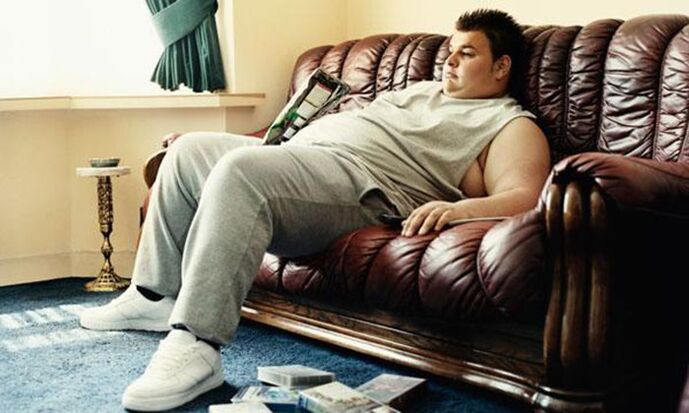
Varicose develops in men more often at the age of 40 and is accompanied by increased leg fat, lower legs, visible edema, venous pattern on the surface of the skin, frequent convulsions and itching of the skin of the type of allergic dermatitis.In some advanced cases, blood clots and vascular infection are possible.And if the disease is invisible in the beginning, then over time its manifestations become obvious.But the major changes occur in the veins whose walls are so weakening that everyone, even insignificant on them, the effect of a toxic substance or infection provokes their damage.The technique for treating varicose veins in men is the same as in women and has no specific characteristics.
Pathology in women
The beautiful half of the population suffers from varicose veins several times more than men.Favorable factors for this are:
- Wearing high collection shoes or selected not in accordance with the size and completeness of the leg;
- Pulling or too tight clothes that prevent normal circulation;
- The work requiring all the day of the leg is a seller, admission administrator, hairdresser, teacher, chef, etc.;
- Hormonal changes due to pregnancy, birth and age -related restructuring of the body (menopause);
- Weight experiments - frequent fluctuations in body weight, extreme diets aimed at sharp weight loss, uncontrolled set of extra pounds.
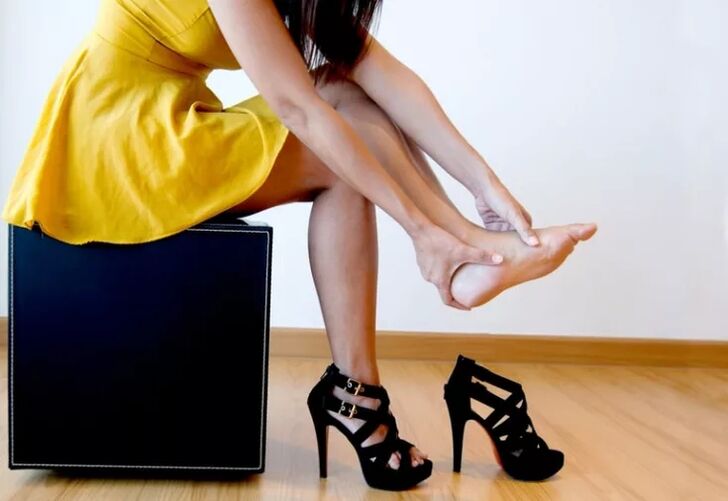
Women are common patients in phlebologists and cosmetologists.In an attempt to preserve the aesthetic appearance of the skin as long as possible, the ladies are more responsible for the treatment of varicose veins than men and achieve visible improvements in the clinical condition of the arterial system.
Given the increased natural tendency to varicose veins, the appearance of symptoms such as swelling of the legs, excessive legs, itching of the skin and burning sensation, manifestation of small vessels and a venous pattern should seriously alert a woman and become the cause of an immediate visit to the doctor.
Diagnosis
Special methods of examination are used to make an accurate diagnosis of varicose veins, as well as to determine the degree of severity.The standard examination scheme for access to a phlebologist consists of the following procedures:
- Collecting a history of the disease, which detects possible risk factors and causes;
- Visual examination of the patient by changing the last position, as well as palpation of the vein lesion;
- Laboratory blood test;
- Ultrasound -colored duplex synography of the lower limbs arteries, which allows for a proper medical opinion, to measure the speed and direction of the bloodstream, to draw a map of its movement, to obtain a characteristic and a clear image of the blood vessels;
- Vascular X -ray (phlebography) using contrast matter to determine the appearance and shape of the veins, the functional capabilities of the valves and the direction of the bloodstream.
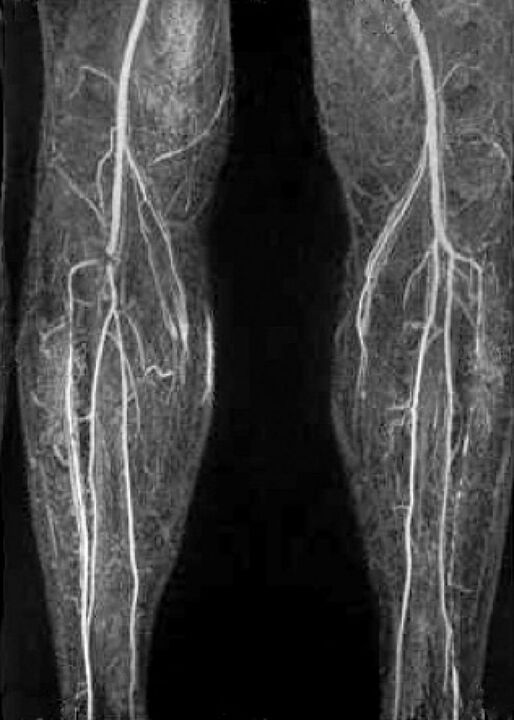
Often these methods of study are sufficient to determine the exact clinic, but in some cases they resort to the use of additional diagnostic methods:
- Three -dimensional CT (computed tomography) with phlebography;
- Photopletographic, which ensures the use of infrared and light radiation of a photoresistor or phototransistor;
- Phleboscinthography based on the use of radionuclide isotopes and phlebomanometry, dynamic examination of the venous pressure of the lower limbs;
- Lymphoscinography showing the condition and degree of change in lymph nodes.
The need to use a particular diagnostic method is established by the doctor based on the complexity of the situation and the individual clinical indicators of the patient.
The timely and competently selected method of examination allows you to determine the position of the surface and deep veins and to form an accurate scheme of the therapeutic course in accordance with the indicators.
Conservative treatment
In the initial stages, varicose veins, reversible and with a responsible approach to treatment, are completely eliminated.In other cases, to fight varicose veins, they resort to conservative therapy using medicines, intravenous corrective drugs and special compression linen.Each of this type of treatment has its own indications for the appointment and specificity of the exposure to the diseased body.
- Drug therapy.
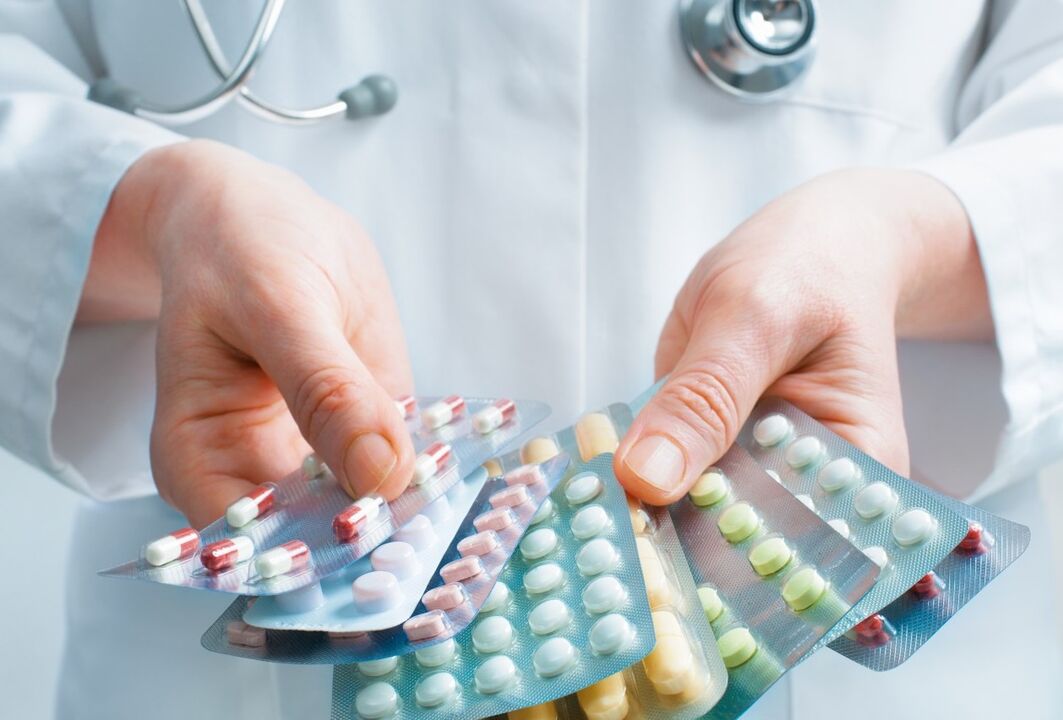 This implies oral use over a period of phlebotropic drugs - phlebotonics, anticoagulants and antioxidants - contributing to the strengthening of blood vessels and reducing their Britishness, better thinning of the blood and normalizing blood flow, eliminating the accumulated toxic suboons from the body.For local treatment, tonic, painkillers, soothing and elimination of edema of gels and ointments are used.B vitamins are also introduced into the therapeutic complex, K and others.The decision on the duration of treatment is made in accordance with the results of the diagnosis and nature of the dynamics of the disease.
This implies oral use over a period of phlebotropic drugs - phlebotonics, anticoagulants and antioxidants - contributing to the strengthening of blood vessels and reducing their Britishness, better thinning of the blood and normalizing blood flow, eliminating the accumulated toxic suboons from the body.For local treatment, tonic, painkillers, soothing and elimination of edema of gels and ointments are used.B vitamins are also introduced into the therapeutic complex, K and others.The decision on the duration of treatment is made in accordance with the results of the diagnosis and nature of the dynamics of the disease. - Sclerotherapy of the arteries.The method involves the use of special medicines acting by sticking the affected varicose veins inside.As a result, the reflux is stabilized and is already performed in healthy vessels.The procedure is performed invasively by intravenous administration of the solution.It is prescribed with a certain condition of blood vessels and small sizes of venous nodes.
- Ozone therapy.It is part of cosmetic medicine and consists in the influence of a cold ozone vessel on the interior space of the vessel to stick the place of the defects.The method is also actively used to remove non -aesthetic vascular network from the surface of the skin.Effective in the initial stage of the disease.Only a few procedures are sufficient to achieve the desired result.
- Compression therapy.
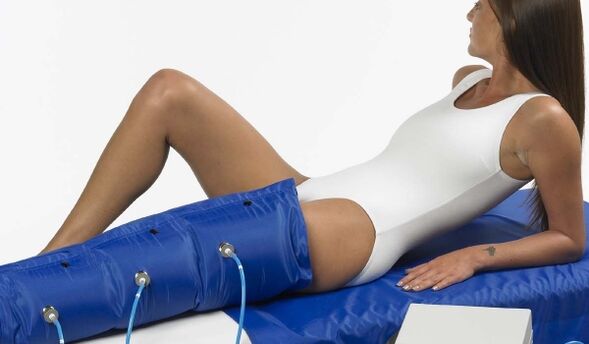 It consists of wearing special medical underwear, which creates pressure of varying intensity on different parts of the legs, which in turn helps to reduce the load on the veins and to restore blood circulation.The constant use of corrective linen protects the vessels from stretching and developing thrombosis.For its intended purpose, compression linen is preventive (minimal compression force), therapeutic (worn only during the exacerbation of venosis) and a hospital (used in the postoperative period in the hospital).It is made in the form of tights, socks, golf and elastic bandage.The choice of compression linen is made only on the recommendation of a doctor.
It consists of wearing special medical underwear, which creates pressure of varying intensity on different parts of the legs, which in turn helps to reduce the load on the veins and to restore blood circulation.The constant use of corrective linen protects the vessels from stretching and developing thrombosis.For its intended purpose, compression linen is preventive (minimal compression force), therapeutic (worn only during the exacerbation of venosis) and a hospital (used in the postoperative period in the hospital).It is made in the form of tights, socks, golf and elastic bandage.The choice of compression linen is made only on the recommendation of a doctor.
These methods of therapy have high efficiency in uncomplicated forms of varicose veins of the lower limbs and help to eliminate pain, reduce swelling, improve the valve system, increase blood flow, normalize blood flow and prevent the development of negative effects of the disease.
Surgical methods for exposure to varicose veins
The work of varicose veins is performed only in extreme cases where a deep lesion of the veins is diagnosed with concomitant complications.The testimony of the appointment of surgery is:
- Noticeable worsening of pathology;
- Development of thrombophlebitis;
- Visible expansion of subcutaneous veins;
- Severe swelling and fatigue of the lower limbs;
- Pathological violation of reflux.
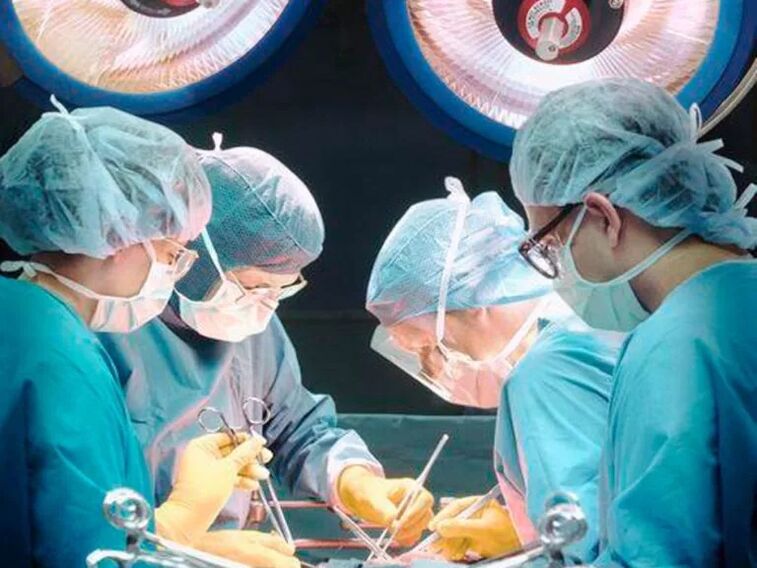
Working under general anesthesia is done using modern surgical techniques such as:
- Radio -frequency duration of blood vessels.Restoration of the vein structure from the inside with the help of a disposable catheter and automatic radio wave generators.
- Endodosis thermal occlusion with wages (SVS).The impact on the vessels of the abundant flow of heated steam.Allows you to penetrate the most improper areas of the venous canal and to directly influence the deformed vessels.
- Laser coagulation of veins.It includes the use of a laser beam aimed at a diseased vein.The procedure leaves no cuts, burns and scars.
- The technique, which consists in bonding the valves of the blood vessels with a special biological adhesive.
- Varadi method.The most complicated method of treatment involving the removal of the affected vessel.Due to 100% of efficiency, this is one of the priority methods of neurosurgery.
Despite the high efficiency of surgical treatment, it is often performed in combination with conservative therapy methods.This approach allows you to speed up the recovery process and securely adjust the result.
Rehabilitation period
During the recovery period and in the future, the competent rehabilitation program helps fight varicose veins of the lower limbs, including periodicals, as well as compliance with the rules of healthy lifestyles and the application of therapeutic gymnastics.
In addition to the physical education of the sanatorium, a patient diagnosed with varicose veins, regardless of the stage of development and period of rehabilitation, to improve blood circulation and prevent blood stagnation in veins, is useful for wearing corrective medical underwear.
Preventive recommendations
In order to reduce the risk of developing vein pathology, it is sufficient to stick to simple but effective tips:
- Try to lead an active image
 Live even with static work - move more, change your position periodically, take short breaks for gymnastics or rest;
Live even with static work - move more, change your position periodically, take short breaks for gymnastics or rest; - Do not throw your foot on your leg during the seat;
- Do not carry a strong squeeze of things;
- Refuse shoes with a high content of measures or place it on occasion;
- Treat chronic blood disorders, especially hemorrhoids;
- As sports hobbies, choose bicycle walks and swimming;
- During the rest, place your feet above the heart level;
- Revise the energy system and include useful products in the diet;
- Control your weight and try to keep it in a steady size;
- Abandonment of bad habits - smoking, alcohol, abuse of fatty foods, etc.;
- Take a contrast shower;
- Use a large amount of fluid during the day - from 1.5 to 2 liters;
- Avoid the long -term sunshine.
Applying these simple recommendations will not only slow down the development of varicose veins and relieve unpleasant discomfort in the lower limbs, but also to alert its appearance in the future.
The treatment of varicose veins has different examinations depending on the complexity of the method of diagnosis and therapy.
"I came across varicose veins during pregnancy. I didn't take anything to give birth. But after I had to take emergency action. I was treating veins with ointments and pills because the situation was not catastrophic. I am now examined by a phlebologist. There is still no deterioration."
"I learned about varicose veins thanks to sports. Regular loads did not go unnoticed and spilled into the progressive varicose veins of the left leg.























